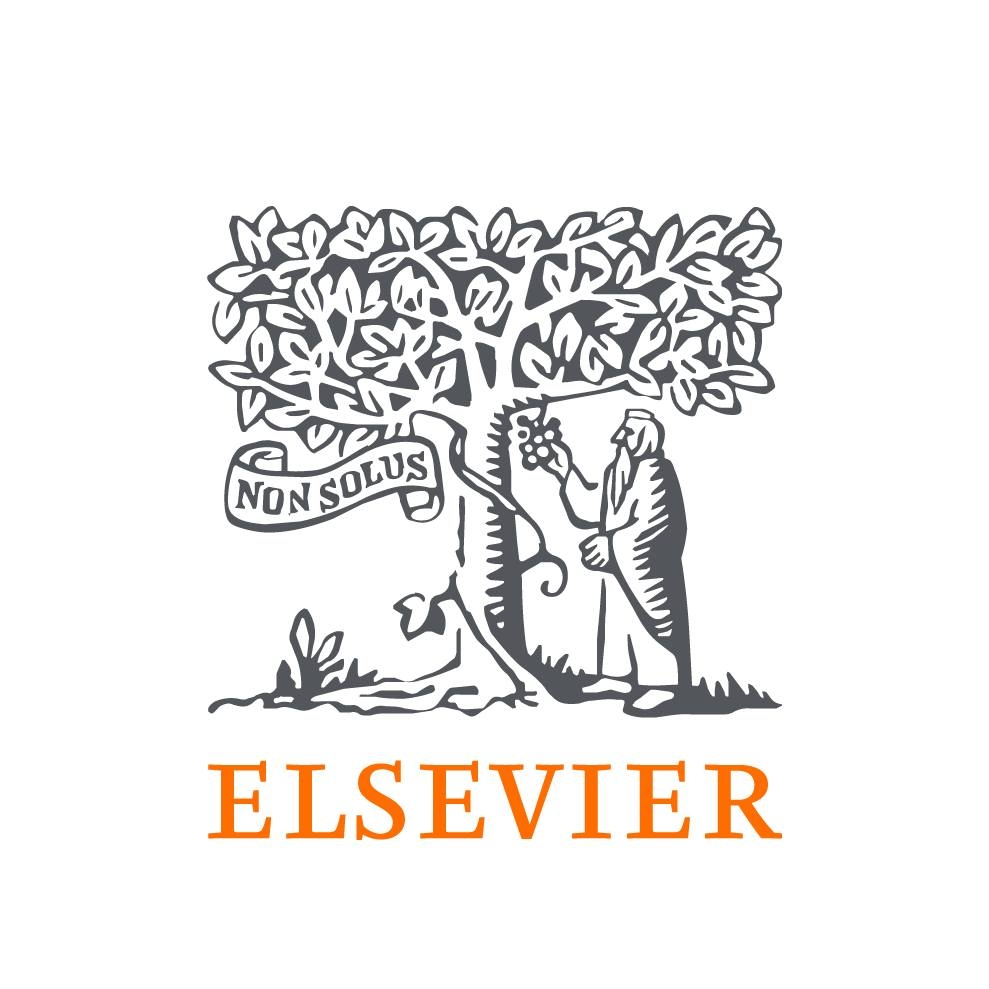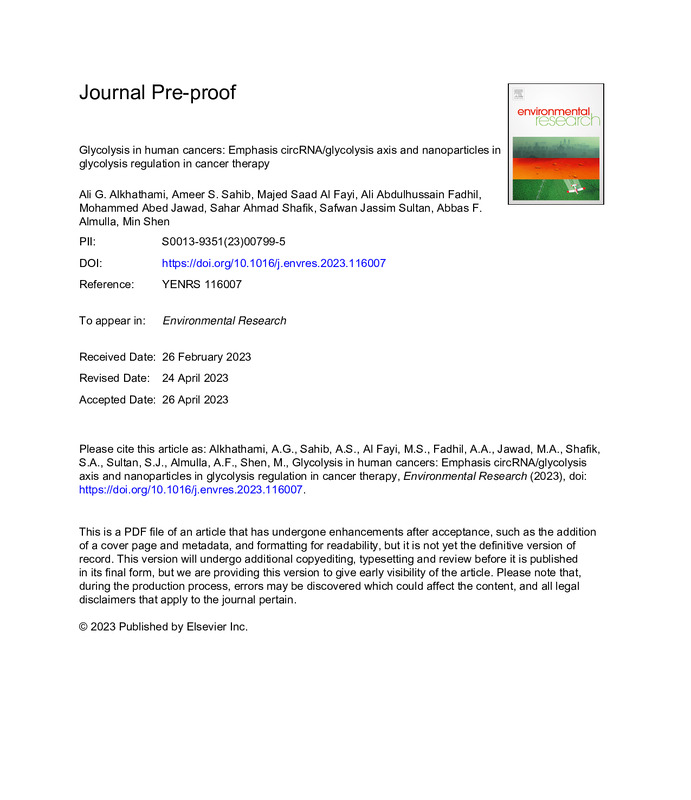Item
Publication
Glycolysis in human cancers: Emphasis circRNA/glycolysis axis and nanoparticles in glycolysis regulation in cancer therapy
- Title
- Glycolysis in human cancers: Emphasis circRNA/glycolysis axis and nanoparticles in glycolysis regulation in cancer therapy
- Abstract
-
The metabolism of cancer has been an interesting hallmark and metabolic reprogramming, especially the
change from oxidative phosphorylation in mitochondria to glucose metabolism known as glycolysis
occurs in cancer. The molecular profile of glycolysis, related molecular pathways and enzymes involved
in this mechanism such as hexokinase have been fully understood. The glycolysis inhibition can
significantly decrease tumorigenesis. On the other hand, circRNAs are new emerging non-coding RNA
(ncRNA) molecules with potential biological functions and aberrant expression in cancer cells which
have received high attention in recent years. CircRNAs have a unique covalently closed loop structure
which makes them highly stable and reliable biomarkers in cancer. CircRNAs are regulators of molecular
mechanisms including glycolysis. The enzymes involved in the glycolysis mechanism such as hexokinase
are regulated by circRNAs to modulate tumor progression. Induction of glycolysis by circRNAs can
significantly increase proliferation rate of cancer cells given access to energy and enhance metastasis.
CircRNAs regulating glycolysis can influence drug resistance in cancers because of theirimpact on
malignancy of tumor cells upon glycolysis induction. TRIM44, CDCA3, SKA2 and ROCK1 are among
the downstream targets of circRNAs in regulating glycolysis in cancer. Additionally, microRNAs are key
regulators of glycolysis mechanism in cancer cells and can affect related molecular pathways and
enzymes. CircRNAs sponge miRNAs to regulate glycolysis as a main upstream mediator. Moreover,
nanoparticles have been emerged as new tools in tumorigenesis suppression and in addition to drug and
gene delivery, then mediate cancer immunotherapy and can be used for vaccine development. The
nanoparticles can delivery circRNAs in cancer therapy and they are promising candidates in regulation of
glycolysis, its suppression and inhibition of related pathways such as HIF-1α. The stimuli-responsive
nanoparticles and ligand-functionalized ones have been developed for selective targeting of glycolysis
and cancer cells, and mediating carcinogenesis inhibition. - Scientific Type
- غير معروف
- Journal volume
- Volume 234(2023)
- Collaboration type
- مشترك
- Publish Date
- April 27, 2023
- Participated Universities (Publication)
-
 Alnoor University
Alnoor University
- Scopus status
- In Scopus
- Scopus index year
- 2 023
- Scopus quarter
- 1
- Scopus citation score
- 11.69999981
- Clarivate status
- In Clarivate
- Clarivate index year
- 2 023
- Clarivate impafact
- 8.430999756
- Pub. Med. status
- In PubMed
- Author (Publication)
- صفوان جاسم سلطان خليل
- Journal (Publication)
- Environmental Research
- Publisher (Publication)
-
 Elsevier
Elsevier
- ISSN
- 0013-9351
- Country (Publication)
-
 United States
United States
- Country type
- عالمية
- College (Publication)
-
 College of Dentistry
College of Dentistry
- Departement (Publication)
-
 Department of Dentistry
Department of Dentistry
- Media
-
 Academic Paper
Academic Paper

